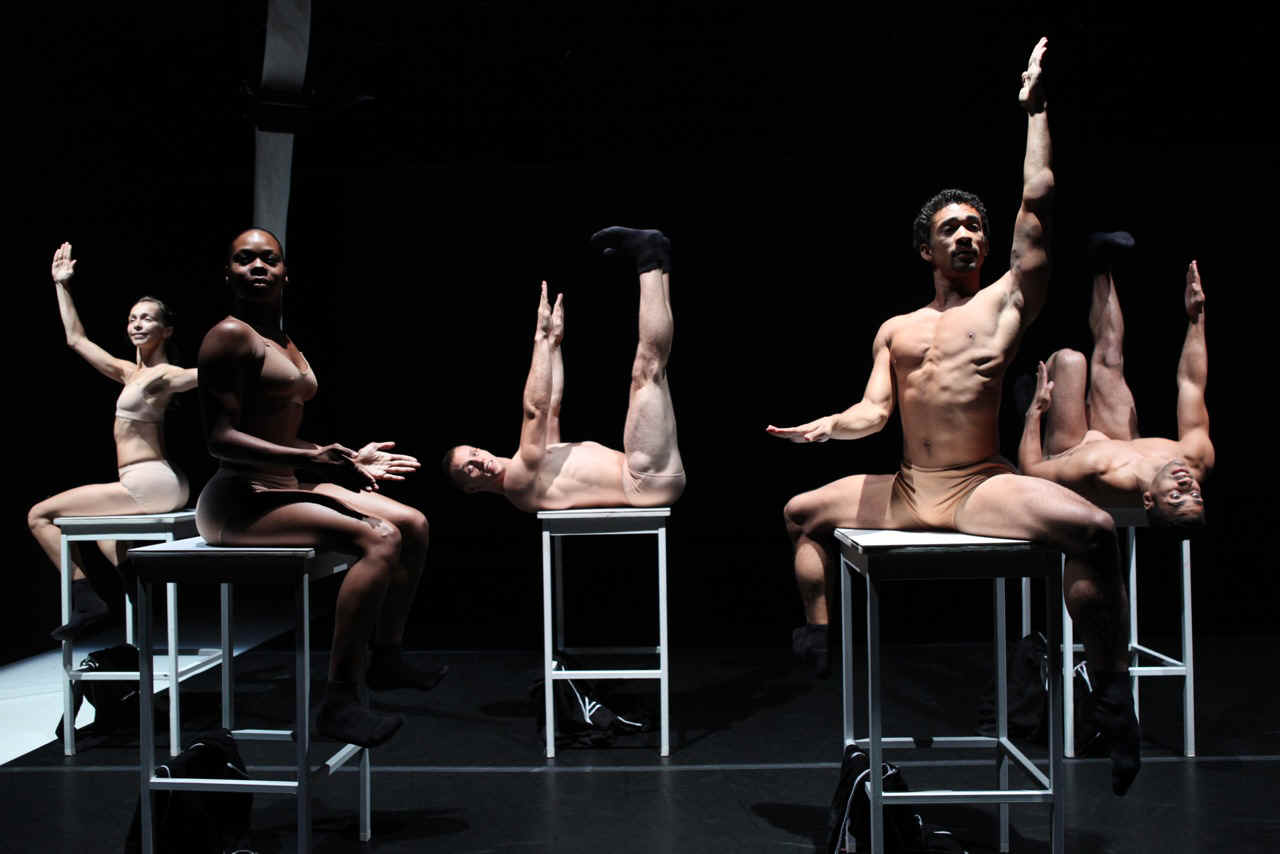|
Cedar Lake is one of the few New York-based contemporary ballet companies whose repertoire does not center on the work of a single resident choreographer. Instead, this troupe, founded in 2003 by Nancy Laurie and currently run by Benoit-Swan Pouffer, distinguishes itself by commissioning works by a variety of emerging choreographers. This two-week season at the Joyce features five pieces by five different international artists (Swedish, Italian, British/Israeli, Norwegian, and Dutch), performed by a 15-member corps of mostly American dancers.
The strength of the company is its athletic vigor, which showed up best in Program A’s opening piece, Jo Stromgren’s “Sunday, Again,” and not just because the dance revolved around a sort of deconstructed badminton game. The bent racquet, the net without poles, and the shuttlecocks turned out to be metaphors for what the choreographer’s program note calls “the domestic jungle of luxury problems and gender frictions.” Fortunately, the metaphor didn’t get banged on too heavily – really, the duet-heavy 35-minute piece was mainly going for the cavalier brusqueness and brutal casualness of couples who’ve been together long enough to get on each other’s nerves over the slightest pretext. Set to three Bach pieces, the dancing is fast and fierce, and the standard is set right away with a killer duet between Jason Kittelberger and Acacia Schachte full of limbless lifts and daredevil jumps. One moment he’s holding her aloft like a wide-spread trophy, next moment she’s dropped into a tango lunge. After this bravura opening, the piece barrels on in a relentless string of shorter unpredictable combinations, often demarcated with a kind of cinematic wipe, as a column of dancers would sweep from one side of the stage to the other, erasing one vignette and setting up another. In a break from the boy-girl pairings, Gwynenn Taylor Jones spent some time mauling Ana-Maria Lucaciu, digging around in her drawers until she finally found the, uh, metaphor she was looking for (shuttlecock get it nudge nudge). I admired the speed and playfulness of the piece, the beautiful lighting (designed by Stromgren with Jim French), and the theatricality (the closing curtain being an especially witty touch).

Theatricality also figured heavily in Alexander Ekman’s “Hubbub,” which had the full company dancing with and on individual tables, often wearing look-at-me-I’m-next-to-naked scanties but sometimes in black onesies with the tops down and sleeves tied around their waists (costumes also designed by Ekman with Luke Simcock). The performers draw war paint on their faces, dance furiously, take a rehearsal break, breathe heavily in rhythm, and parade back and forth while an unseen announcer reveals their secrets (“#2 has dated #14, #9, and #12,” “#4 thinks he has a sexy walk,” etc.). A long duet between Oscar Ramos and Acacia Schachte was accompanied by a prerecorded track of their inner dialogue, quite funny. There were one or two moments in the piece that didn’t necessarily broadcast the influence of William Forsythe. The derivative quality of “Hubbub” didn’t bother me, but I could have done without the chief framing device: a critic (represented visually by a manual typewriter suspended in mid-air with a long sheet of fabric-paper running through it) offering a pontifical blow-by-blow analysis of the dance. The dance didn’t need it, and the eggheady text (by Spenser Theberge) spoken superciliously only induced in me the desire to block it out completely, which I suppose represents most artists’ attitude toward criticism anyway.
Between those two entertaining pieces came a shorter pure-dance work, Jacopo Godani’s earthbound sextet “Unit in Reaction,” the least interesting on the program, performed to an intentionally irritating score by Ulrich Muller and Siegfriend Rossert of 48Nord.
Program B plays through Sunday November 7 and features Hofesh Shecter’s “The Fools” and Didy Veldman’s “Frame of View” as well as “Sunday, Again.”
CultureVulture.net, posted November 2, 2010
|